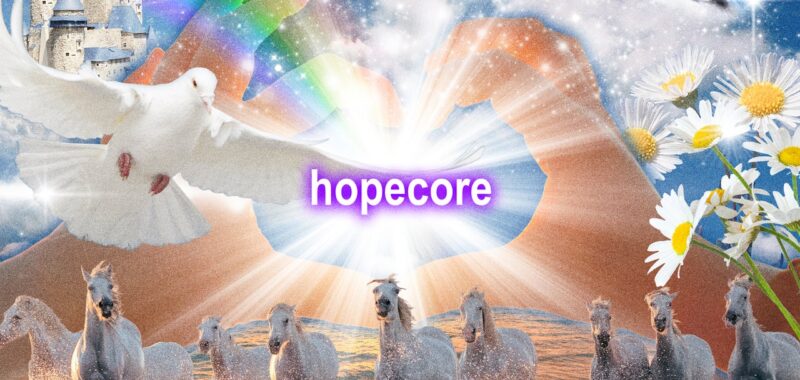Garbage pollutes the internet like a New York curbside nowadays. Social media is devolving into a wasteland of conspiracy theories, ragebait, disinformation, and sponcon. Celebrities are rug-pulling crypto scams while grifters deploy AI to peddle bizarre and unvetted supplements. Meta has eased its hate speech rules, so users can now spam things like “Mexican Immigrants Are Trash!” without punishment. The web will only get more cursed as smart bots devour platforms.
But there’s a glimmer in the muck: hopecore. An offshoot of the miserable, dooming corecore craze, these video edits proffer a positive outlook on life. It’s men overjoyed when they find out they’re going to be grandfathers. A mailman coming to aid a kid’s mother after she fainted. A cancer victim sobbing in gratitude because his best friend just shaved his head bald in solidarity. Be happy, the videos gently coax. Smile. Not all heroes wear capes. Don’t worry about what other people think. Where corecore languished in depression and anger, hopecore provides solutions: Spend time in nature. Appreciate the little things. Spread love and kindness.
Hopecore imagines an idyll where mental agony is just a mood and happiness can be achieved through reciting a dozen mantras in front of a mirror. It’s algorithmic therapy: A negative mind will never give you a positive life, says one clip. Be grateful!
Fans say it’s the best thing on the internet: Hopecore is so powerful. Is this the last gasp of optimism before the entire internet turns toxic? Or is the trend just pathetic algorithm-bait?
These motivational montages have soared to the point where viral videos rank songs used in hopecore edits and hopecore-themed playlists abound. Hopecore has eclipsed corecore in popularity, with three times the amount of TikTok videos posted. And assuming TikTok does shut down in the US on Sunday, following today’s Supreme Court decision, other social media platforms will likely just absorb the rising memement—it’s already leaked across Instagram Reels, YouTube Shorts, Reddit, and X.
While the self-help content genre has existed for ages, it speaks to the ennui kids feel that such a massive trend is devoted to something as vague and simple as “hope.” It’s 2008 Barack Obama campaign vibes for the slop-post era. A typical hopecore video stitches a montage of heartwarming clips with an acoustic rock song that conjures up a fireside singalong on the last day of summer camp. They’re the kind of tunes that, like HOME’s “Resonance,” feel scientifically engineered to induce sweet, cozy nostalgia. One popular clip, with over 21 million views, opens with a slop clip of “Lava vs. Steak”—a genre where people pour lava over things to see what happens—before a snap sound effect hits, as if you’ve woken from a dream. You’re teleported to a tundra of white-tipped trees and snow-covered squirrels. “Nature Break,” the caption reads.
There are countless styles tailored for every conceivable subset of viewers, from foreign-language to girlboss hopecore. Manosphere hopecore swarms YouTube: clips of brofluencers like David Goggins sitting in a monochrome room, cloaked in shadow, urging viewers to pull themselves up by the bootstraps and become real men. Influencers have started tagging videos that have nothing to do with hopecore edits as #hopecore, presumably to profit off the trend.

